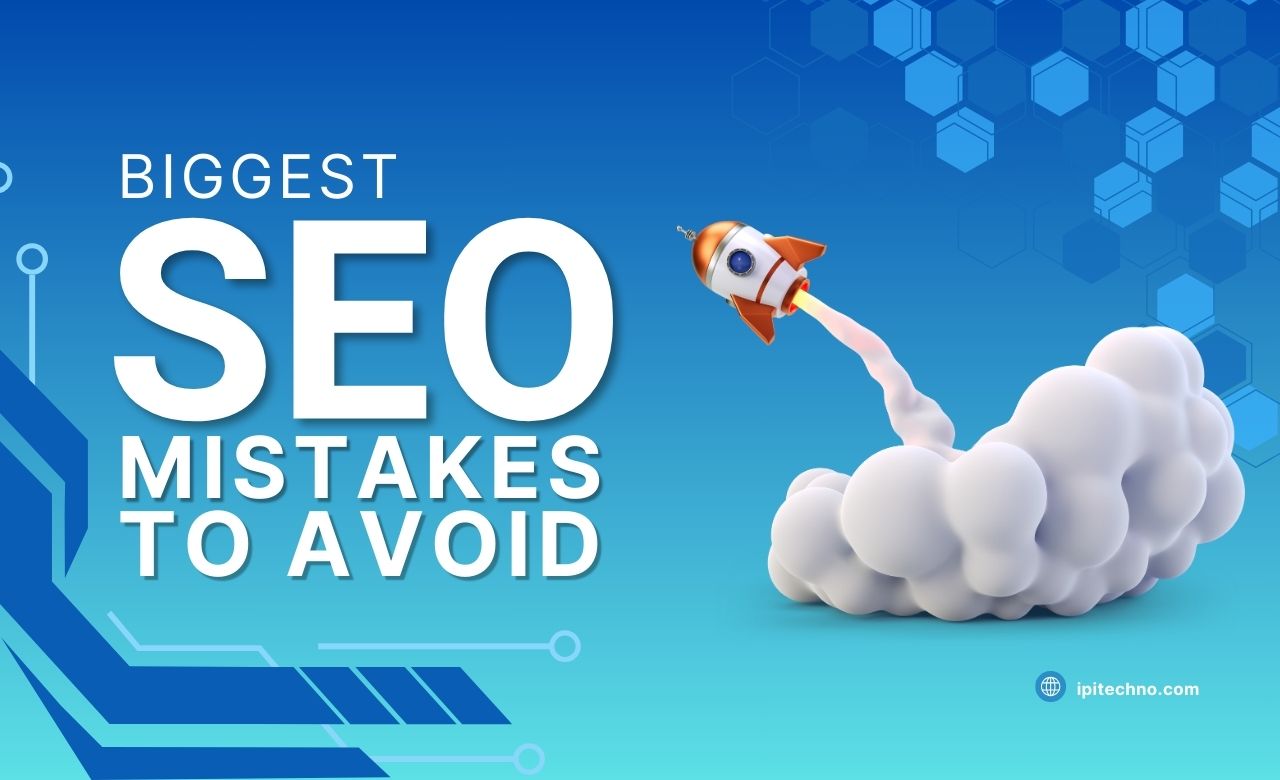

Search engine optimization (SEO) is a powerful tool for driving organic traffic to your website, but when done incorrectly, it can harm your rankings instead of improving them. Many businesses unknowingly make common SEO mistakes that prevent them from reaching their full potential on Google.
With Google’s constant algorithm updates, businesses must stay up to date with best practices. SEO isn’t just about adding keywords it requires a well-structured website, quality content, and technical optimization.
Let’s look at the biggest SEO mistakes that could be holding your website back and how to fix them.
1. Ignoring Keyword Research
One major SEO error is skipping proper keyword research. Keywords serve as a link between your content and readers. If you’re not using the right keywords, your website won’t rank for relevant searches. Some businesses either use highly competitive keywords or fail to optimize for search intent.
- Use a mix of short-tail and long-tail keywords for better reach.
- Focus on search intent rather than just high-volume keywords.
- Conduct competitor keyword analysis to find gaps in your strategy.
- Regularly update keywords based on trending searches in your industry.
2. Poor Website Structure and Navigation
A confusing or cluttered website can frustrate visitors and cause them to leave quickly, increasing your bounce rate. A well-structured website not only enhances user experience but also helps search engines crawl and index your pages more effectively.
- Ensure all pages are easily accessible within three clicks.
- Use SEO-friendly URLs that describe the page content.
- Create clear internal linking to help users navigate your website.
- Optimize your menu and site hierarchy to improve discoverability.
- Implement structured data to help search engines understand your content better.
3. Not Optimizing for Mobile
Google prioritizes mobile-friendly websites through its mobile-first indexing. If your website isn’t responsive, you could be losing a significant amount of traffic. More than half of all web searches come from mobile devices, so mobile optimization is no longer optional.
- Use responsive web design to ensure smooth viewing across all devices.
- Optimize buttons, fonts, and images for better touch-screen usability.
- Check mobile speed scores and reduce unnecessary scripts.
4. Slow Page Speed
A slow-loading website negatively affects user experience and search rankings. Google considers page speed a direct ranking factor, and users are likely to abandon a website that takes too long to load.
- Optimize image sizes without losing quality.
- Minimize HTTP requests and unnecessary plugins.
- Enable lazy loading for better performance.
- Use fast, reliable web hosting to improve server response time.
- Leverage browser caching to store static files and enhance speed.
5. Ignoring On-Page SEO
Many websites focus on content but neglect essential on-page SEO factors. This includes everything from metadata optimization to proper content formatting.
- Write compelling meta descriptions and title tags with relevant keywords.
- Use heading tags (H1, H2, H3, etc.) to structure your content.
- Optimize alt text for images to improve accessibility and ranking.
- Add internal links to guide users through your content.
- Avoid using duplicate title tags across different pages.
6. Not Producing High-Quality Content
When it comes to SEO, content is still the top priority. Publishing low-quality, outdated, or duplicated content can reduce your credibility and hurt your rankings.
- Focus on informative, well-researched content that provides value.
- Avoid thin content—each page should have at least 500-1000 words.
- Refresh old blog posts with updated information and statistics.
- Break content into readable sections with subheadings and visuals.
7. Lack of a Strong Backlink Strategy
Backlinks are still one of the biggest factors for ranking success. If your site lacks backlinks from authoritative sources, it may struggle to rank well.
- Build relationships with industry-relevant websites for guest posting.
- Avoid spammy links from low-authority or irrelevant sites.
- Monitor and disavow toxic backlinks that can harm your rankings.
- Get featured in business directories and niche forums.
8. Technical SEO Issues
Technical SEO problems can prevent search engines from properly crawling and indexing your site, leading to lower rankings.
- Fix broken links and 404 errors to maintain a smooth experience.
- Use canonical tags to prevent duplicate content issues.
- Optimize your robots.txt file to ensure important pages are crawled.
- Implement schema markup to improve search result visibility.
- Regularly update your XML sitemap for accurate indexing.
9. Neglecting Local SEO
If your business relies on local customers, failing to optimize for local search can put you behind competitors.
- Claim and optimize your Google My Business profile.
- Use location-based keywords naturally in your content.
- Encourage customers to leave positive reviews.
- Ensure your NAP (Name, Address, Phone Number) is consistent across platforms.
10. Not Tracking and Adjusting SEO Strategies
SEO is not a one-time effort. Many businesses fail to track their performance, leading to missed opportunities for improvement.
- Regularly analyze traffic data using Google Analytics.
- Check your search rankings and adjust keywords accordingly.
- Identify pages with high bounce rates and improve content.
- Conduct regular SEO audits to fix technical errors.
Final Thoughts
Avoiding these SEO mistakes can significantly improve your rankings, drive more traffic, and increase user experience. Staying updated with Google’s best practices and continually refining your strategy will keep you ahead of the competition.
For expert SEO solutions and professional website optimization, IPITechno provides custom-made strategies to help businesses achieve higher search rankings and online growth.
Comments are closed